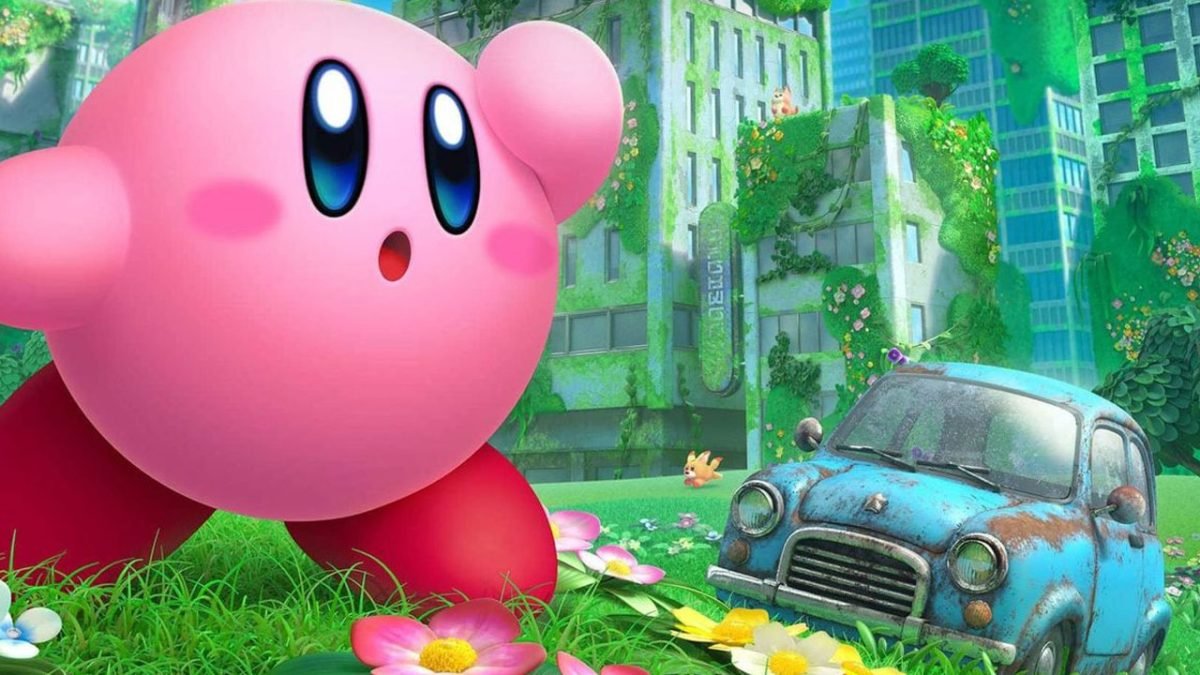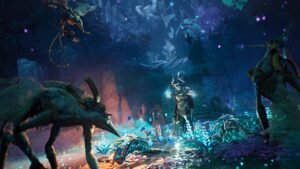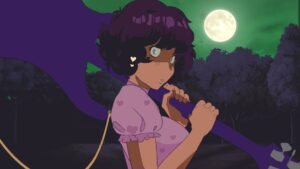I’ve mentioned in my writing that Kirby’s Super Star was one of my most played games on the SNES, but saying that is a bit of an understatement. Kirby’s Super Star was probably my all-time favourite game growing up, second maybe to Golden Sun on the GBA. While I had played Kirby’s Dream Land on the Game Boy when I was much younger—the look, feel, and scope of Super Star made it a Kirby game with no equal.
A big part of my love for the Kirby franchise has largely come from how daring it always felt. Kirby’s Dream Land 2 combined Kirby’s iconic copy ability with animal companions for interesting combinations; Kirby 64 combined 2D gameplay with the larger-than-life (at the time) feel of 3D—continuing to combine powers in interesting ways, while being surprisingly dark at times. Even some of the stranger entries like Mass Attack, Epic Yarn, and Canvas Curse all found unique ways to shake up the Kirby formula.
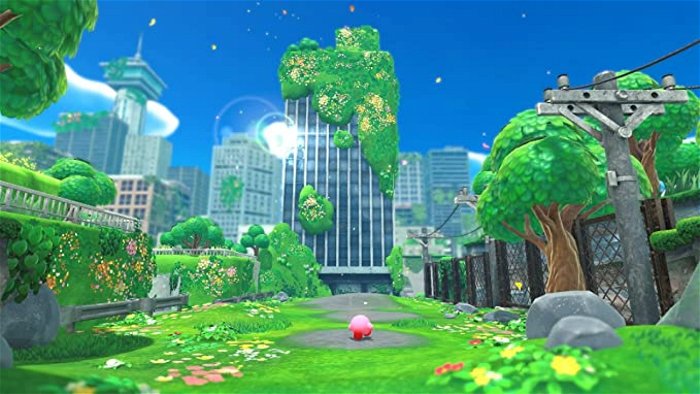
However, in recent years, Kirby has felt somewhat safe and stale, and I feel that continues with Kirby and the Forgotten Land. When it was shown off in the September 2021 Nintendo Direct, I thought maybe Nintendo was taking the franchise in a bigger, bolder direction. However, upon playing it, “forgotten” feels like an apt description of this land.
Kirby and the Forgotten Land opens as Kirby is gleefully flying around Planet Popstar on his trusty Warp Star, when suddenly a massive wormhole opens up and begins sucking up anything in its vicinity, including several of the Waddle Dee inhabitants. Kirby heroically tries to fly away from the anomaly but is hit by some debris and sent flying into it.
“However, in recent years, Kirby has felt somewhat safe and stale, and I feel that continues with Kirby and the Forgotten Land.”
He awakens on a beach in what appears to be an abandoned version of our human world, where he finds strange creatures are not only capturing the Waddle Dees, but a strange creature named Elfilin, who says their companions were also captured by the creatures. Kirby agrees to help Elfilin and the two set off together to rescue their companions and uncover the secrets of the Forgotten Land.

It’s a fairly standard plot as far as Kirby games go—at least the more recent crop simply has some antagonistic force show up on Dream Land for no real reason and Kirby has to deal with it. While I have no particular axe to grind with the story, part of me does long for Kirby to return to a more…galactic story—not unlike Kirby 64 or the Milky Way Wishes section of Super Star.
Gameplay is also a pretty standard Kirby affair, and, for the most part, Kirby and the Forgotten Land maintains the series’ level of fun, charm, and inventiveness, implementing some interesting—albeit, underdeveloped—new ideas mixed in. Most notably, and as was shown off in the reveal trailer, Kirby and the Forgotten Land’s makes the shift to full 3D, with levels that seem to expand on the Kirby 3D Rumble minigame from Planet Robobot. While still linear in structure, levels are given a larger, more open, 3D design, allowing for greater freedom of movement.
“…for the most part, Kirby and the Forgotten Land maintains the series’ level of fun, charm, and inventiveness, implementing some interesting—albeit, underdeveloped—new ideas mixed in.”
And while this gives the game the feel of something a lot larger, it mostly results in a lot of empty space. Kirby has always worked best with tight level design, incorporating the use of multiple abilities for unique play styles, but this mostly came from understanding traversing two-dimensional space. In the Kirby and the Forgotten Land, much like with Super Mario 3D World, it feels like these 2D sensibilities have been adapted to a 3D space, and the challenge just isn’t the same. Enemies are pretty sparse, and they still act like Kirby enemies, so they’re fairly docile, and not only that, but they’re also so spaced out across larger areas, that there rarely feels like there’s any distinct challenge. This is compounded by the fact that, even on “normal” difficulty, taking repeated hits from enemies or pitfalls results in losing less health on each subsequent hit.

Not to say that a game which is clearly designed for small children needs to have some Elden Ring level of challenge, but the game is so forgiving that it kind of feels like even kids will just sleep-walk through it.
Furthermore, despite the 3D environments, movement feels pretty restricted as well, as—in what I’m sure was an effort to balance the gameplay—Kirby can no longer fly without limits like he did in previous games. Even in the water level, there’s no way to actually swim underwater—the water levels being some of my favourites in Kirby games, which was pretty underwhelming to experience. Everything just feels very grounded, in comparison to previous games, which made a lot of the challenge and fun, finding interesting ways to move and attack through two-dimensional space.
“…movement feels pretty restricted as well, as—in what I’m sure was an effort to balance the gameplay—Kirby can no longer fly without limits like he did in previous games.”
Even Kirby’s Copy ability feels pretty lacking in Kirby and the Forgotten Land. There are a total of 10 Copy abilities, two of which—Crash and Sleep—were usually special bonus powers in previous games. The range of attacks that these abilities have is fairly limited as well. However, players can find blueprints to create different versions of the powers, but that really means adding a small change to what the power already does. For example, one of the Bomb upgrades lets you chain bombs together for bigger explosions, while one of the fire upgrades gives you a longer fire stream, and longer aerial fire-dash.

You would think that the limited range of Copy abilities would open the door to the newly added “Mouthful Mode,” where—due to Kirby being warped during his travel through the wormhole—he can stretch to fit over some of the remnants of society like cars and soda-machines, but even this is used pretty sparingly throughout the game. Like the Copy abilities, there are about 10 Mouthful Abilities—two of which are sort of, single-use specific moments, like the Wheel and Jet moments in Planet Robobot.
While the Mouthful abilities are a pretty neat concept, they suffer from something I’ve noticed with almost every recent Kirby game, going as far back as Kirby’s Return to Dream Land. Unlike earlier Kirby games—where levels were tightly designed and allowed players a host of abilities to experiment with, only rarely having situations that required specific powers—recent Kirby games are usually built around one central gimmick, and rather than weaving the idea into the game, they build very specific sequences around the gimmick in a kind of, one-and-done way.
And that’s kind of my biggest issue with Kirby and the Forgotten Land, it’s trying to have the look and feel of something really big, but when you play it, it feels really small. The lack of Copy abilities, as well as their limited function, not only stifles any kind of creative freedom you could have but makes the game feel lacking compared to its predecessors. Especially considering how Kirby staples like Rock, Beam, and Parasol are absent from this game.
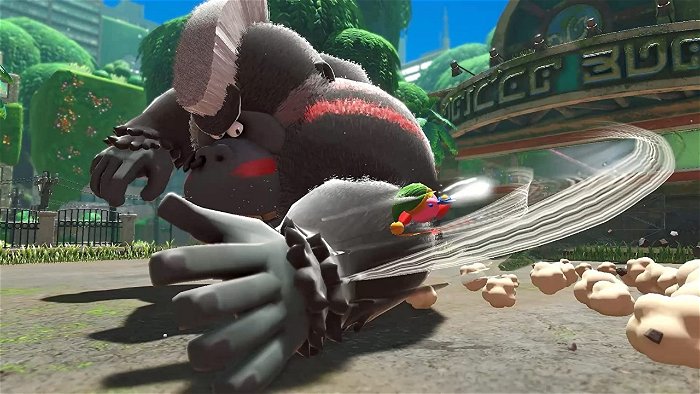
When the Mouthful abilities do appear, the sections of the level they’re in are very specifically tailored to them, so there’s really no excitement in playing around with them, since every challenge that involves them is laid out so painfully obviously, and once you’re done with it, you just move on, so it never really feels special. There’s one level that actually gives you a wide variety of Mouthful powers to solve its puzzles—although with every one you solved, you release the power, which was a bit of a bummer—and I find myself wondering why every level wasn’t designed in a way that just gave you a ton of powers to play around with.
Outside the main game, though directly related to it, is the Waddle Dee Town. As players make their way through each level, they’ll find captured Waddle Dees, which will populate the town and open a handful of shops and mini-games as more are found. The mini-games are a fairly fun addition—Waddle Dee Café: Help Wanted! Is a frantic game of order matching, as Waddle Dee’s display their food order in deceptive ways, and players must try to match them quickly and without error, Flash Fishing is a pretty fun little fishing mini-game where players have to use quick and precise button prompts to reel in fish, with consecutive streaks landing bigger fish, and Tilt-and-Roll Kirby is a pretty basic version of Kirby’s Tilt’ n Tumble.
In addition to the mini-games, the Waddle Dee Café and Waddle Dee’s Item Shop allow players to purchase health items or power-ups that can be used within levels, which can be pretty helpful, and like previous Kirby games, an Arena opens up allowing players to challenge enemies and bosses, included a Meta-Knight encounter—while he doesn’t become playable, players can unlock a Sword upgrade that transforms the ability into a Meta-Knight styled weapon.
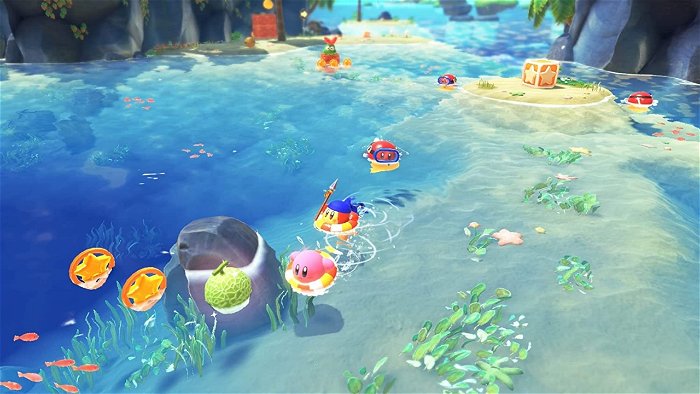
While I will admit, this review is coming off somewhat negative, where Kirby and the Forgotten Land really stands out is in its visuals and sound design. Simply put, the game is absolutely gorgeous, both on and off the dock. Each area is bursting with details, and a copious amount of colour that really shines in HD, and especially on the Switch OLED. The minimalistic designs also allow for a lot of clarity, especially in handheld mode, where there were several times I was convinced the Switch was outputting in 1080p. While it’s not totally seamless—there are some pretty noticeable frame-drops for far away enemies or objects—the game maintains a look and feel that constantly kept me engaged and wanting to see what the next level looked like.
“…where Kirby and the Forgotten Land really stands out is in its visuals and sound design.”
Music is equally inspired, maintaining the epic grandeur, combined with whimsical fun that defines almost every Kirby soundtrack. From the moment you leave the silence of the starting area, and the music begins to swell as the moss-covered skyscrapers come into view, backed by playful flute and violins. It perfectly captures the spirit of the Kirby franchise, and the lovable pink puffball himself.
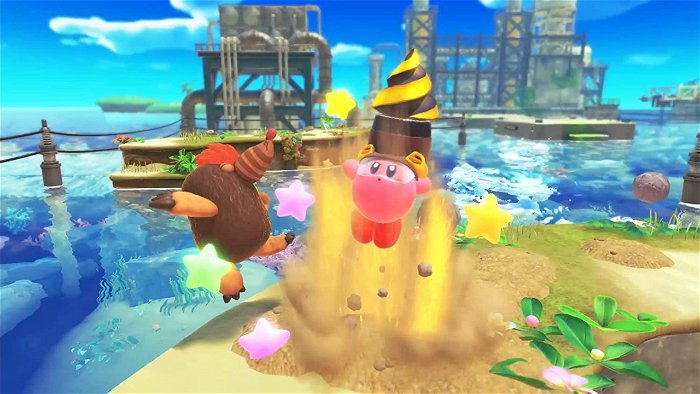
Furthermore, the score is filled with fun details: like the way the birds in the aforementioned silent starting area whistle the main theme, or the way the style of certain level themes change depending on the mood or setting, add a lot of charm and heart to the game. This extends to the sound effects, which have a great sense of style to them—mixing high-quality, almost realistic effects, with nostalgic 16-bit sounds from previous games.
Kirby and the Forgotten Land is by no means a bad game, but it definitely didn’t engage me like so many Kirby games before it—which has been the trend with a lot of the recent releases in the franchise. It’s a good enough Kirby game, and while I’m sure fans of the franchise, and young kids will definitely enjoy it, part of me—likely, the cynic in me—feels like, especially in the modern game industry, we should strive for more than “good enough.”
